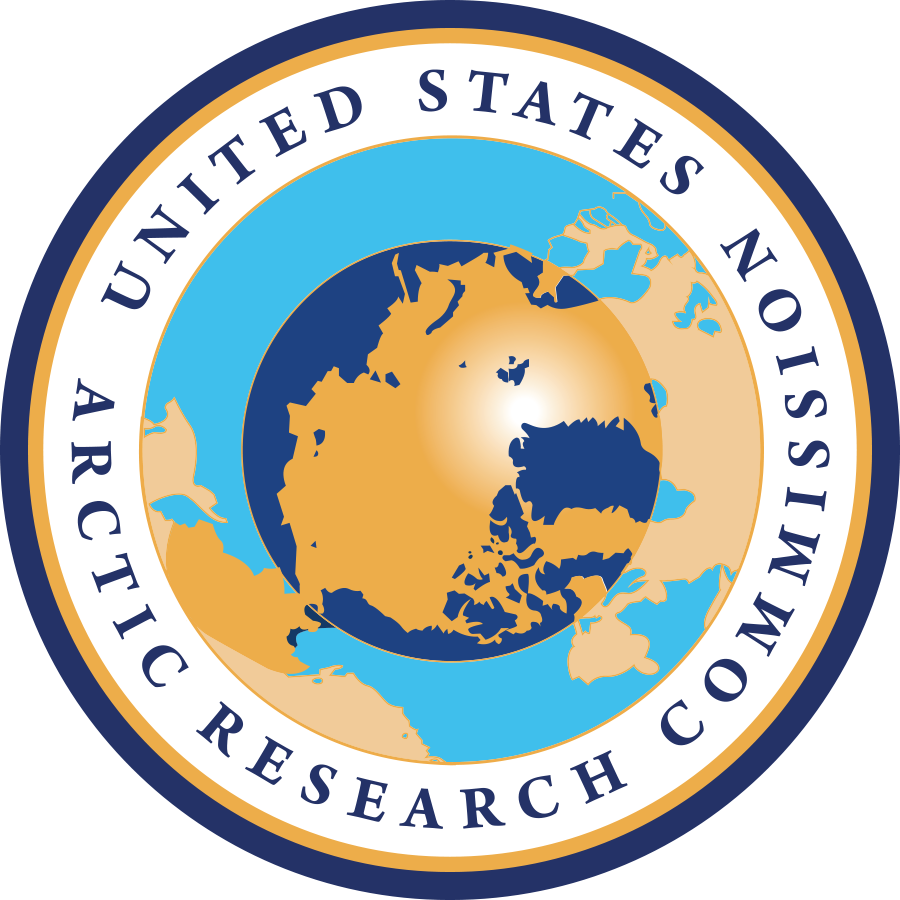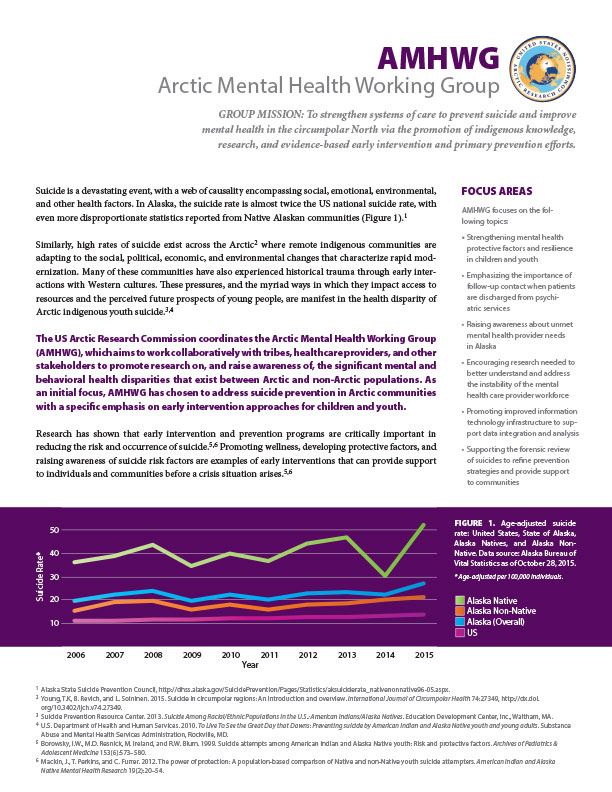Arctic Mental Health
Working Group
A USARC-Coordinated
Working Group
ARCHIVE. The Arctic Mental Health Working Group (AMHWG) pages on this website contain archived content from 2015–2018. In 2018, concurrent with the $4.25M grant received by the University of Alaska Fairbanks for the Alaska Native Collaborative Hub for Research Resilience (ANCHRR), the group disbanded to pursue focused projects in smaller groups. Please contact crosa@arctic.gov for additional information.
Arctic Mental Health Working Group
A USARC-Coordinated Working Group
ARCHIVE. The Arctic Mental Health Working Group (AMHWG) pages on this website contain archived content from 2015–2018. In 2018, concurrent with the $4.25M grant received by the University of Alaska Fairbanks for the Alaska Native Collaborative Hub for Research Resilience (ANCHRR), the group disbanded to pursue focused projects in smaller groups. Please contact crosa@arctic.gov for additional information.
Background
Suicide is a devastating event with a web of causality encompassing social, emotional, environmental and other health factors. In Alaska, the suicide rate is almost twice the US National suicide rate with even more disproportionate statistics reported from Native Alaskan communities (Figure 1).1
Similarly, high rates of suicide exist across the Arctic2 where remote indigenous communities are adapting to the social, political, economic and environmental changes that characterize rapid modernization. Many of these communities have also experienced historical trauma through early interactions with western cultures. These pressures, and the myriad of ways in which they impact access to resources and the perceived future prospects of young people, are manifest in the health disparity of Arctic indigenous youth suicide.3,4
Research has shown that early intervention and prevention programs are critically important in reducing the risk and occurrence of suicide.5,6 Promoting wellness, developing protective factors and raising awareness of suicide risk factors are examples of early interventions that can provide support to individuals and communities before a crisis situation arises. 5,6
To promote increased capacity and strengthened systems of care, AMHWG encourages the following research and activities:
- Collect, integrate, and analyze data to improve our understanding of the epidemiology of mental and behavioral health issues, including suicidality.
- Improve mental and behavioral health workforce capacity in Alaska.
- Strengthen mental health protective factors of children and youth with a focus on community-based efforts.

Figure 1. Age-adjusted suicide rate: United States, State of Alaska, Alaska Natives, and Alaska Non-Native. Data source: Alaska Bureau of Vital Statistics as of October 28, 2015.
* Age-adjusted per 100,000 individuals.
More info
Check out the AMHWG brochure for more information on this working group. Available Format: 472 KB pdf
References
1. Alaska State Suicide Prevention Council, http://dhss.alaska.gov/SuicidePrevention/Pages/Statistics/aksuiciderate_nativenonnative96-05.aspx.
2. Young, T.K, B. Revich, and L. Soininen. 2015. Suicide in circumpolar regions: An introduction and overview. International Journal of Circumpolar Health 74:27349, http://dx.doi.org/10.3402/ijch.v74.27349.
3. Suicide Prevention Resource Center. 2013. Suicide Among Racial/Ethnic Populations in the U.S.: American Indians/Alaska Natives. Education Development Center, Inc., Waltham, MA.
4. U.S. Department of Health and Human Services. 2010. To Live To See the Great Day that Dawns: Preventing suicide by American Indian and Alaska Native youth and young adults. Substance Abuse and Mental Health Services Administration, Rockville, MD.
5. Borowsky, I.W., M.D. Resnick, M. Ireland, and R.W. Blum. 1999. Suicide attempts among American Indian and Alaska Native youth: Risk and protective factors. Archives of Pediatrics & Adolescent Medicine 153(6):573–580.
6. Mackin, J., T. Perkins, and C. Furrer. 2012. The power of protection: A population-based comparison of Native and non-Native youth suicide attempters. American Indian and Alaska Native Mental Health Research 19(2):20–54.
Home | About | Publications | Working Groups | News & Events | Policies | Photo Credits | Privacy
Looking for U.S. government information and services? Visit USA.gov
Connect
Looking for U.S. government information and services? Visit USA.gov



